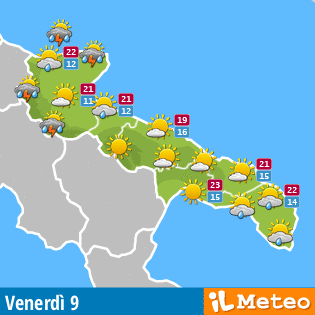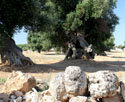Monopoli
Info Monopoli
-
Region:
Provincie:
Municipality:
CAP:
Area code:
Surface:
Population:
city hall:
-
Apulia
Bari
Monopoli
70043
080
157,89 Kmq
48.403
Via Giuseppe Garibaldi 6
Monopoli and its suggestive and lively old town centre
Situated on the sea and surrounded by old Messapic walls which date back to the 5th century B.C., Monopoli is one of the most important ports in the Adriatic sea and it is characterized by a very lively old town centre. With its suggestive and characteristic atmosphere, it dates back to Early Middle Ages; it was built on the ruins of an important Messapic town.
Ancient Apulian town, Monopoli was probably peopled by inhabitants of Egnazia fleeing from the city destroyed by Totila, king of Goths. During the Byzantine period it became a rich maritime city and it continued to flourish also after the Norman conquest. Its port was reference point for eastwards journeys and, in particular, for the Crusades and the pilgrimages towards the Holy Land: thanks to its geographical position Monopoli experienced a great economic development. At the end of the peninsula stands the castle; it is a fortress built during the Aragonese period on the ruins of a previous Benedictine monastery, renovated by Carlo V for the sake of defense.
It was built between the 16th and the 17th century and it is characterized by a pentagonal form, typical of 16th – century fortresses. The parade ground of the castle gives a sensation of emotional involvement: it is provided with four gunports, two looking to the open sea and the others looking to the port. It is possible to take a walk on the ancient walls admiring the beautiful sea and covering the whole perimeter of the old town. The main symbol of the city is the elegant cathedral dedicated to the Madonna della Madia, characterized by a luxurious Baroque façade. The church, built in 1107 by bishop Romualdo, had been completely renovated in 1742 according to the Baroque taste. Inside we observe a Latin cross plan with a double transept and a chapel over the major altar, where the 14th – century icon representing the Virgin, patron saint of the city, is kept. In the neighbourhood of the cathedral, it is possible to admire the Renaissance church of San Domenico: it is worth noting the fretwork rose window and the carved façade, realized by Stefano da Putignano.
In the old town centre we find also the medieval church of Santa Maria degli Amalfitani, built in the 12th century on a Basilian crypt. At about 4 km from Monopoli, towards Brindisi, it is possible to visit the castle – abbey of Santo Stefano: it lies on a rocky spur falling sheer to the sea, which was built between the 12th and the 14th century by Benedictine monks. In 15th century the Cavalieri di Malta took control over the abbey transforming it in a real fortress.
Also the countryside around Monopoli is a perfect place for a breathtaking walk, through the ancient ways which, in the past, linked the numerous fortified farms. There are many evidences of ancient Basilian settlements in the countryside, where we can admire some cave-churches which keep precious evidences of Byzantine frescoes: two instances can be the church of the Holy Spirit and the church of San Giovanni.













